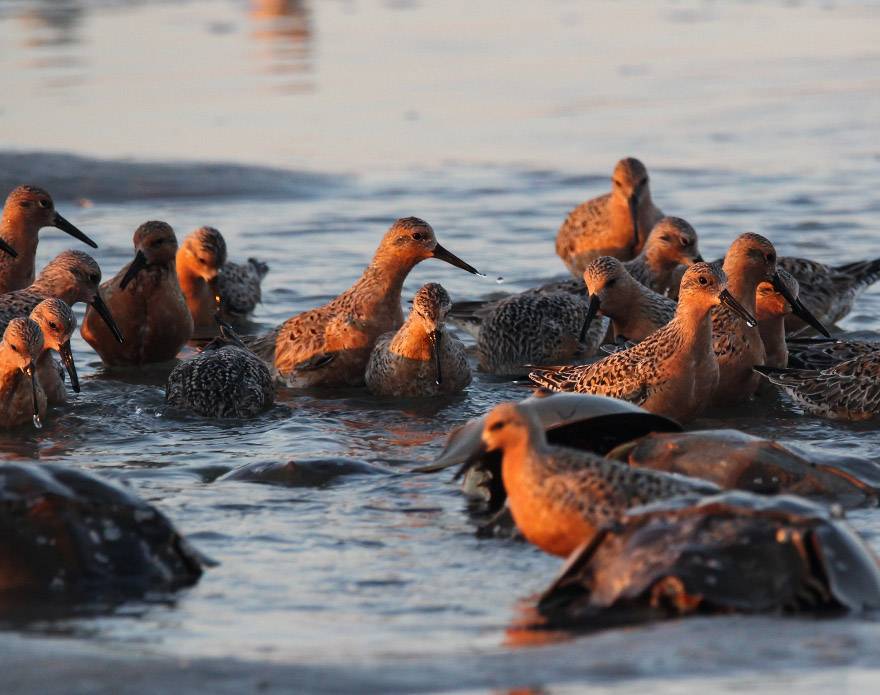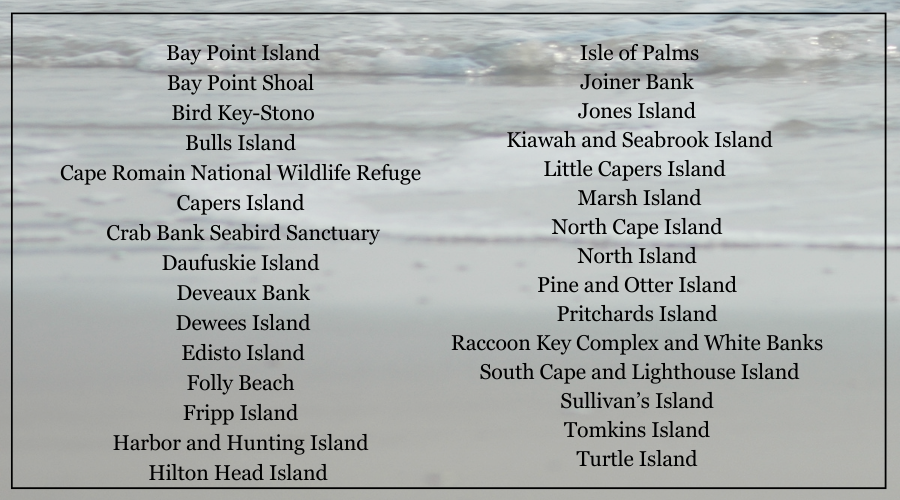Yesterday, after over a year of fast-paced, intense litigation the Coastal Conservation League and our partners reached a milestone settlement agreement in response to our legal challenge against Charles River Laboratories and the S.C. Department of Natural Resources over the use of holding ponds used in the biomedical bleeding of horseshoe crabs. This victory secures necessary protections for the federally threatened rufa red knot (Calidris cantus rufa) – which has experienced a population decline of over 85% in recent decades.
This April, in response to litigation brought by the Conservation League and Defenders of Wildlife with representation from the Southern Environmental Law Center, the District Court issued an order prohibiting horseshoe crab harvesting from critical red knot stopover beaches. Now, this settlement agreement resolving our litigation broadens those protections and safeguards a critical reprieve for horseshoe crabs and red knots for at least 5 years.
Until at least 2028, the following beaches are now closed to horseshoe crab harvesting from March 15 through May 31 because of this major legal victory.
In addition to the beach closures, the agreement ensures the entirety of Cape Romain National Wildlife Refuge – land, waters, marsh, and beaches – is off limits to harvesting. Female horseshoe crabs are also prohibited from being held in holding ponds, which helps enhance the likelihood that spawning occurs on beaches where red knots can feed on their eggs. This agreement also provides additional permitting conditions that include enhanced protection of horseshoe crabs during the collection process and GPS monitoring that will be used on harvester boats to record collection locations and reported to SCDNR to ensure compliance.
This timely agreement places smart, focused restrictions that allows red knots visiting South Carolina beaches better access to the vital, nutrient-rich, food source they need for their transcontinental migration.

Group of red knots interspersed with spawning horseshoe crabs and eating eggs on the coast of South Carolina. Photo by Fletcher Smith.
This is a welcome relief for the imperiled red knot. Many thousands of horseshoe crabs are harvested by hand when they come to shore to spawn on sandy beaches, primarily during new and full moon high tides in the spring. They are sold to the multi-billion-dollar pharmaceutical company Charles River Labs for use in the biomedical industry and drained of a substantial amount of their blood.
Red knots need to consume thousands of horseshoe crabs eggs to accumulate the fat stores they need for their arduous journeys, and now they have a better chance of achieving that lofty goal.

